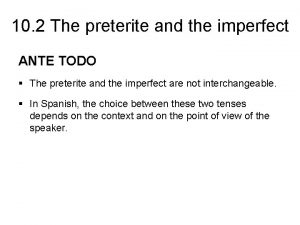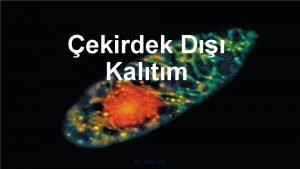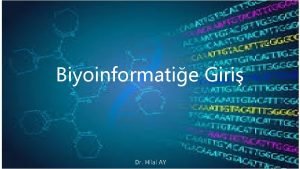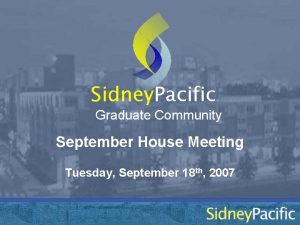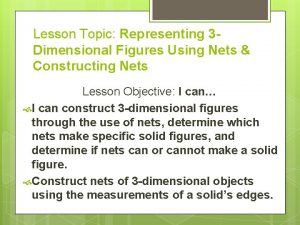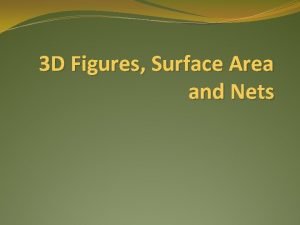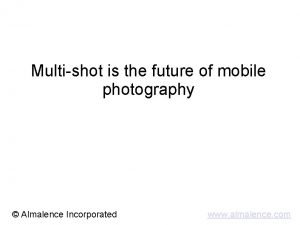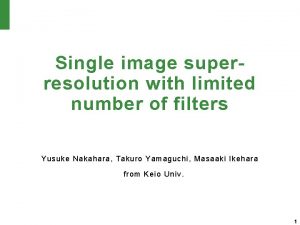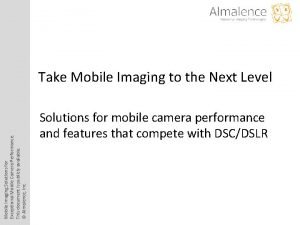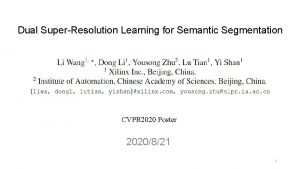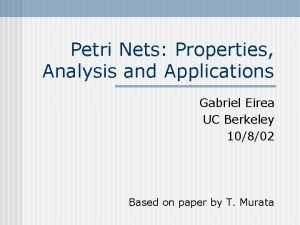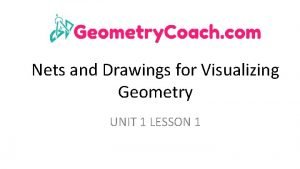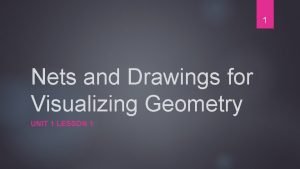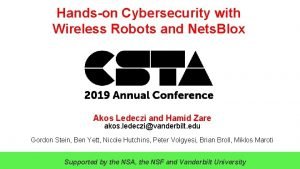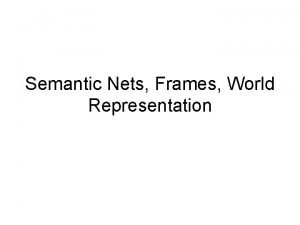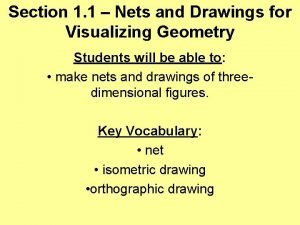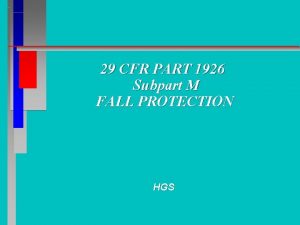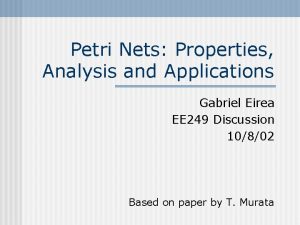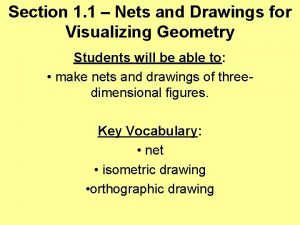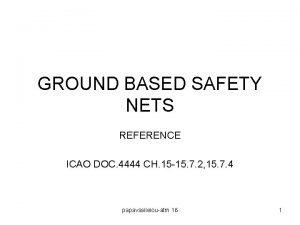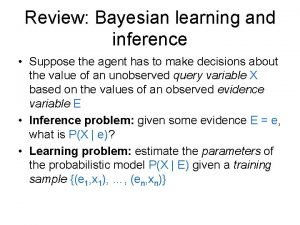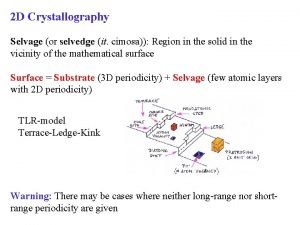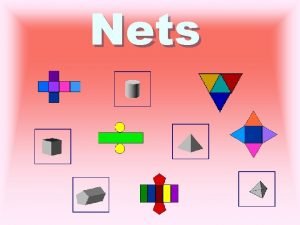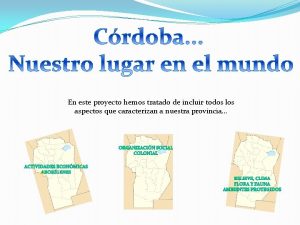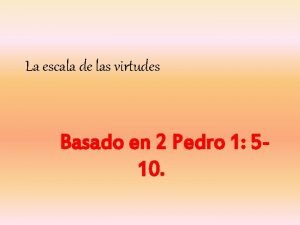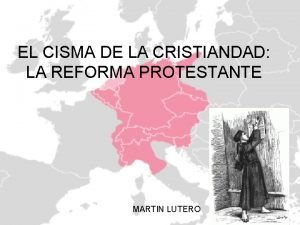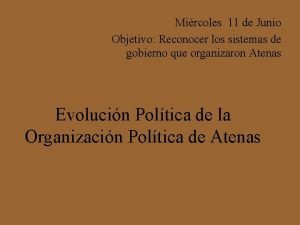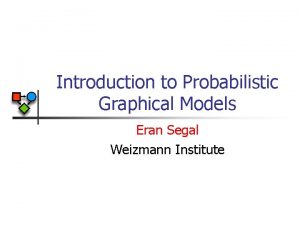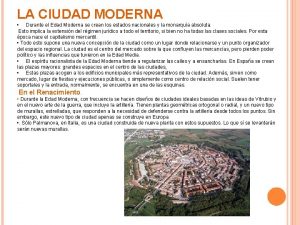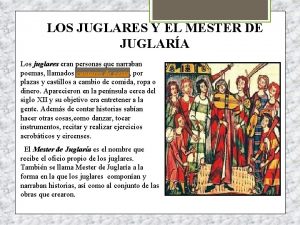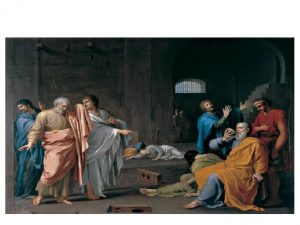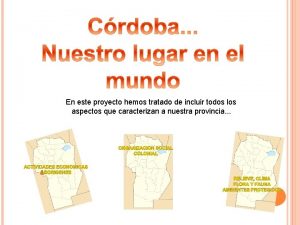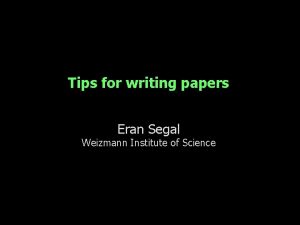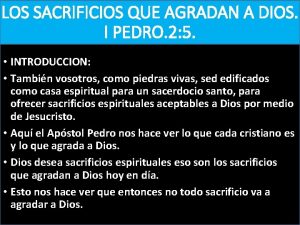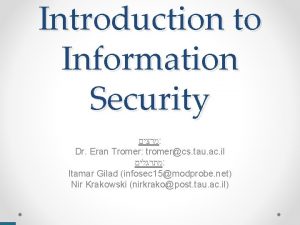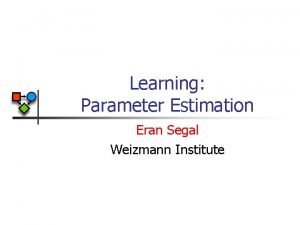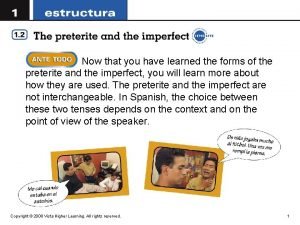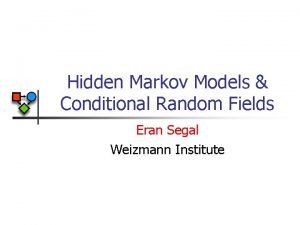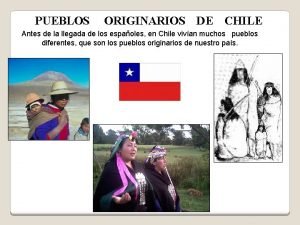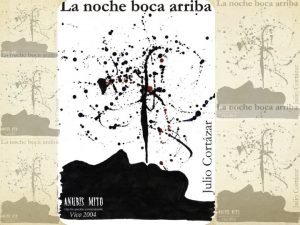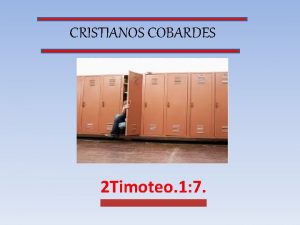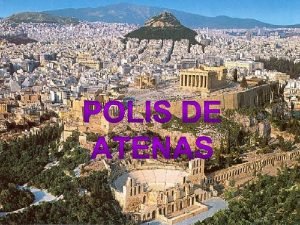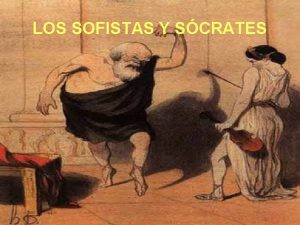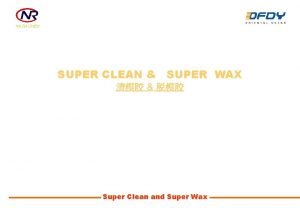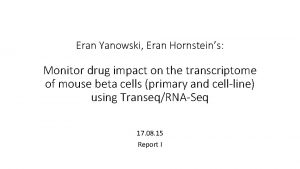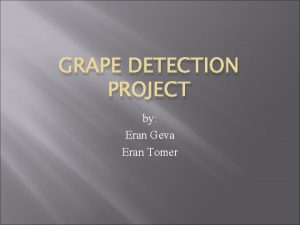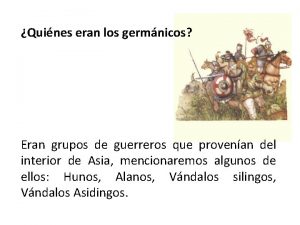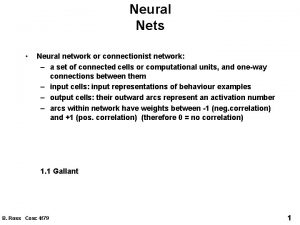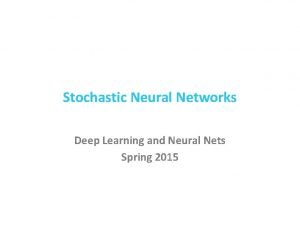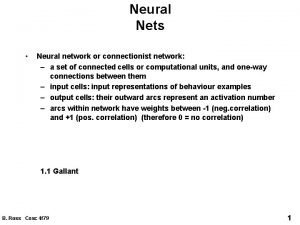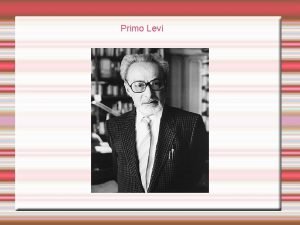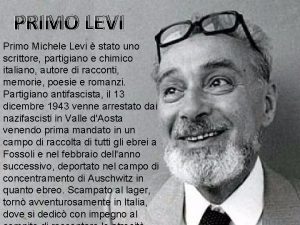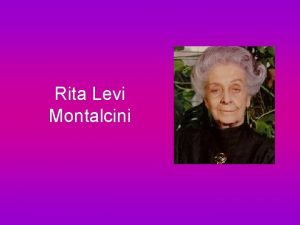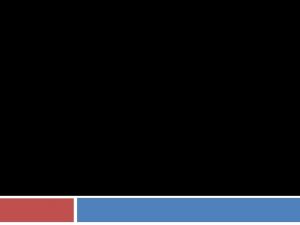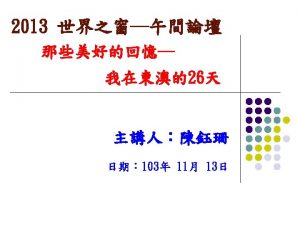SUPER RESOLUTION USING NEURAL NETS Hila Levi Eran









![Previous work - Example based - External DB ■ [*] W. T. Freeman et Previous work - Example based - External DB ■ [*] W. T. Freeman et](https://slidetodoc.com/presentation_image_h/e418345e3a299fa5dfb003b003d88786/image-10.jpg)


![Previous work - Example based - using the image ■ [*] J. Huang et Previous work - Example based - using the image ■ [*] J. Huang et](https://slidetodoc.com/presentation_image_h/e418345e3a299fa5dfb003b003d88786/image-13.jpg)




















































- Slides: 65

SUPER RESOLUTION USING NEURAL NETS Hila Levi & Eran Amar Weizmann Ins. 2016

Lecture Outline ■ Introduction ■ Previous work ■ NN #1 - Dong et al, pure learning ■ NN #2 - Wang et al, domain knowledge integrating ■ NN #3 - Kim et al, pure learning ■ Conclusions

Introduction – Super resolution ■ Goal: obtaining a high resolution (HR) image from a low resolution (LR) input image ■ Ill posed problem ■ Motivation – overcoming the inherent resolution limitations of low cost imaging sensors/compressed images allowing better utilization of high resolution displays

Introduction – Neural Networks Old machine learning algorithm (first work - 1943) Widely used since 2012 (Alex net) Mostly on high-level-vision tasks (classification, detection, segmentation)

Previous work – Single Image Super resolutions ■ ■ Interpolation based – Bilinear, Bicubic, Splines Reconstruction based - Exploiting natural images priors Example based – Using External Database (millions of HR + LR patch pairs) – Using redundancy in the image itself – at different locations and across different scales – Using Predefined dictionary - Sparse Coding Algorithm NN – Image denoising – Image super-resolution

Previous work - Interpolation based ■ Results overly smoothed edges + ringing artifacts

Previous work – Single Image Super resolutions ■ ■ Interpolation based – Bilinear, Bicubic, Splines Reconstruction based - Exploiting natural images priors Example based – Using External Database (millions of HR + LR patch pairs) – Using redundancy in the image itself – at different locations and across different scales – Using Predefined dictionary - Sparse Coding Algorithm NN – Image denoising – Image super-resolution

Previous work - Reconstruction based ■ Limited to small magnification factors ■ L 1 minimization + regularization based on bilateral prior ■ Gradient profile prior

Previous work – Single Image Super resolutions ■ ■ Interpolation based – Bilinear, Bicubic, Splines Reconstruction based - Exploiting natural images priors Example based – Using External Database (lots of HR + LR patch pairs) – Using redundancy in the image itself – at different locations and across different scales – Using Predefined dictionary - Sparse Coding Algorithm NN – Image denoising – Image super-resolution
![Previous work Example based External DB W T Freeman et Previous work - Example based - External DB ■ [*] W. T. Freeman et](https://slidetodoc.com/presentation_image_h/e418345e3a299fa5dfb003b003d88786/image-10.jpg)
Previous work - Example based - External DB ■ [*] W. T. Freeman et al, Example based super-resolution, 2002

Previous work – Single Image Super resolutions ■ ■ Interpolation based – Bilinear, Bicubic, Splines Reconstruction based - Exploiting natural images priors Example based – Using External Database (millions of HR + LR patch pairs) – Using redundancy in the image itself – at different locations and across different scales – Using Predefined dictionary - Sparse Coding Algorithm NN – Image denoising – Image super-resolution

Previous work - Example based - using the image ■ Use patch recurrence within and across scales of a single image: ■ [*] D. Glasner, S. Bagon, and M. Irani. Super-resolution from a single image. In ICCV, 2009
![Previous work Example based using the image J Huang et Previous work - Example based - using the image ■ [*] J. Huang et](https://slidetodoc.com/presentation_image_h/e418345e3a299fa5dfb003b003d88786/image-13.jpg)
Previous work - Example based - using the image ■ [*] J. Huang et al, Single Image Super-resolution from Transformed Self. Exemplars, 2015

Previous work – Single Image Super resolutions ■ ■ Interpolation based – Bilinear, Bicubic, Splines Reconstruction based - Exploiting natural images priors Example based – Using External Database (millions of HR + LR patch pairs) – Using redundancy in the image itself – at different locations and across different scales – Using Predefined dictionary - Sparse Coding Algorithm NN – Image denoising – Image super-resolution

Previous work - Example based - Sparse Coding Suppose we have Jointly Pre-trained HR + LR Dictionaries Typical numbers - 512 9 x 9 patches ■ [*] J. Yang et al, Image SR via sparse representation, IEEE TIP 2010





Previous work - Example based - SC -Sparse code extraction ■ We want to solve – NP hard problem ■ Instead we will solve – Still Sparsity encourage … – Known problem with an iterative solution – ISTA (Iterative Shrinkage and Thresholding Algorithm

Previous work – Single Image Super resolutions ■ Interpolation based ■ Reconstruction based ■ Example based ■ NN – Image denoising – ■ MLP (2012) ■ Image Denoising and Inpainting (2012) – Image super-resolution – ■ Dong et al (2014) ■ Wang et al (2015) ■ Kim et al (2015)

Previous work – Single Image Super resolutions ■ Interpolation based ■ Reconstruction based ■ Example based ■ NN – Image denoising – ■ MLP (2012), ■ Image Denoising and Inpainting (2012) – Image super-resolution – ■ Dong et al (2014) ■ Wang et al (2015) ■ Kim et al (2015)

Metrics ■ MSE (Mean Square Error) ■ PSNR (Peak Signal to Noise Ratio) – Common in image restoration tasks – Partially related to perceptual quality ■ SSIM (Structural SIMilarity index)

Databases ■ Training – 91 images for training – Image. Net ■ Testing – Set 5 – 5 images ( factor 2 3 4) – Set 14 – 14 images (factor 3) – urban 100 – BDS 100 – Imagenet

NN #1 – (SR-CNN) ■ Based on two articles: – C. Dong et al, Learning a deep convolutional network for image SR, ECCV 2014 – C. Dong et al, Image SR using deep convolutional networks, TPAMI 2015

#1 - Contribution of the work

#1 - Super Resolution Pipeline ■ Patch Extraction and representation – extracts overlapping patches and represent each patch by a set of pre-trained bases (PCA, DCT, Haar) ■ Non linear mapping - each LR vector maps conceptually to a HR vector ■ Reconstruction – aggregates the HR vectors to generate HR image

#1 - Relationship to convolutional neural network SR creation stages SR-CNN ■ Patch Extraction and representation ■ Applying a convolutional layer with n 1 filters on the input image ■ Non linear mapping ……………. ■ One (or more) convolutional layers with a nonlinear activation……… ■ Reconstruction ■ Linear convolution on the n 2 feature maps

#1 - Relationship to convolutional neural network SR creation stages SR-CNN ■ Patch Extraction and representation ■ Applying a convolutional layer with n 1 filters on the input image ■ Non linear mapping ……………. ■ One (or more) convolutional layers with a nonlinear activation……… ■ Reconstruction ■ Linear convolution on the n 2 feature maps

#1 - Relationship to convolutional neural network SR creation stages SR-CNN ■ Patch Extraction and representation ■ Applying a convolutional layer with n 1 filters on the input image ■ Non linear mapping ……………. ■ One (or more) convolutional layers with a nonlinear activation……… ■ Reconstruction ■ Linear convolution on the n 2 feature maps

#1 - Relationship to the sparse coding based methods Sparse Coding SRCNN ■ Extract LR patch, Project on a LR dictionary, size n 1 ■ Applying n 1 linear filters on the input image ■ Sparse coding solver, transform to HR sparse code, size n 2 ■ Non linear mapping ………… …. . ■ Linear convolution on the n 2 feature maps ■ Project to HR dictionary, average HR patches

#1 - Pros & Cons ■ Pros – – End to end optimization scheme – Very flexible, standard building blocks ■ Cons – – A very simple network with 3 layers. Limited expressive power – Sparse coding techniques rely on sparsity – there isn’t any mechanism to ensure sparsity

#1 - Training ■ Loss function - MSE ■ Stochastic gradient descent ■ Training data: – 91 images, total of 24800 patches (33 x 33) – 396000 images (Image. Net), 5 million patches ■ Testing – Set 5 – Set 14 – BSD 200 ■ Data creation: – Image bluring – Subsampling – Bicubic interpolation

#1 - Training Data ■ More training data leads to better results ■ The effect of big data is less expressive than in high-level-vision problems – maybe because the relatively small network

#1 - Net Parameters - Filter Size, Net width

#1 - Net Parameters - deeper structure ● The performance was worse than before ● No convergence after a week of training

#1 - Comparison with existing methods ■ SR-CNN 9 -5 -5 (~60 K params) trained on Image. Net



#1 - Conclusions ■ Nice results ■ Pure learning scheme with the simplest architecture exists ■ The comparison to the sparse coding algorithm is not needed ■ Experienced bad convergence properties, that are not usual in classification CNN anymore – probably because no regularizations: – No dropouts, – no batch normalization, – no proper initialization, – no pre-processing

NN #2 – (SCN) ■ Based on: – Z. Wang, et al, Deep networks for image super-resolution with sparse prior. ICCV, 2015

#2 - Contribution of the work ■ Combine the domain expertise of sparse coding and the merits of deep ■ Use network cascading for large and arbitrary scaling factors; ■ Conduct a subjective evaluation on several recent state-of-the-art methods. learning to achieve better SR performance with faster training and smaller model size;

#2 - Reminder – Sparse coding

#2 - Network implementation of sparse coding ■ Based on: – K. Gregor and Y. Le. Cun, Learning fast approximations of sparse coding, ICML 2010 ■ Main idea: – ISTA can be easily implemented as a recurrent network – Adding end-to-end learning (LISTA) – a good approximation can be obtained within a fixed (and small) number of recurrent stages

#2 - Sparse coding based Network ■ Now: – Sparse coding solver – learnable block – Patch wise processing – convolutional layers – Combining all together

#2 - Advantages over previous models ■ Architecture follows exactly the SC based SR method, enabling end-to-end training ■ Net’s block are meaningful – can be initialized by previously learned dictionaries - and further improve by training

#2 - Network cascade ■ SCN - A separate model is needed to be trained for each scaling factor ■ CSCN – cascade of SCNs

#2 - Training ■ Loss function - MSE ■ Stochastic gradient descent ■ Training data: – 91 images, total of 24800 patches (33 x 33), data augmentation Testing – Set 5 – Set 14 – BSD 100 ■ ■ Data creation: – Image bluring – Subsampling – Bicubic interpolation

#2 - Comparison with existing methods


#2 - Subjective evaluation

#2 - Conclusions

NN #3 – (VDSR) ■ Based on: – J. Kim et al, Accurate Image Super-Resolution Using Very Deep Convolutional Networks, ar. Xiv: 1511. 04587, 2015

#3 - Contribution of the work ■ Highly accurate SR method based on a very deep convolutional network ■ Boosting convergence rate using residual learning and gradient clipping ■ Extension to multi-scale SR

#3 - Proposed network ■ Inspired by the VGG net (Simonyan & Zisserman) ■ 20 layers, each consists of 64 feature maps using 3 x 3 filters

#3 - The deeper – the better ■ Deeper network results in: – Larger receptive field per output pixel (more information) – More expressive functions

#3 - Residual Learning ■ Much faster convergence ■ Superior performance

#3 - Training ■ Loss function - MSE ■ Stochastic gradient descent ■ Training data: – 291 images, data augmentation ■ Testing – Set 5 – Set 14 – B 100 – Urban 100 ■ Data creation: – Image bluring – Subsampling – Bicubic interpolation

#3 - Comparison with existing methods



#3 - Conclusions ■ Better results than the former method ■ Elegantly organized work, the residual prediction is a nice idea ■ Can be easily applied to other image restoration domains

just another last slide Domain Expertise vs. End-to-End optimization How to utilize Neural Networks for algorithmic challenges? One possible approach, is to try to combine the network with existing wellengineered algorithms (“physically” or by better initialization). On the other hand, there is a “pure” learning approach which looks at the NN as a “black box”. That is, one should build a network with some (possibly customized) architecture and let it optimize its parameters jointly in an end-to-end manner. In this talk we will discuss those two approaches for the task of image restoration.

references ■ ■ A. Beck and M. Teboulle, A fast iterative shrinkage-thresholding algorithm with application to wavelet based image deblurring, ICASSP 2009 D. Glasner, S. Bagon, and M. Irani. Super-resolution from a single image. In ICCV, 2009 ■ K. Gregor and Y. Le. Cun, Learning fast approximations of sparse coding, ICML 2010 ■ J. Yang et al, Image SR via sparse representation, IEEE TIP 2010 ■ C. Dong et al, Learning a deep convolutional network for image SR, ECCV 2014 ■ C. Dong et al, Image SR using deep convolutional networks, TPAMI 2015 ■ J. Kim et al, Accurate Image Super-Resolution Using Very Deep Convolutional Networks, ar. Xiv: 1511. 04587, 2015 ■ Z. Wang, et al, Deep networks for image super-resolution with sparse prior. ICCV, 2015

Any questions?
 Audio super resolution using neural networks
Audio super resolution using neural networks Bharath subramanyam
Bharath subramanyam Intentalo eran las doce
Intentalo eran las doce Levi levi lama sabachthani
Levi levi lama sabachthani Image super resolution using deep convolutional networks
Image super resolution using deep convolutional networks Dr. hila may
Dr. hila may Dr hila may
Dr hila may Sidney pacific mit
Sidney pacific mit Gr chest 2 projections
Gr chest 2 projections Represent solid figures using nets
Represent solid figures using nets Surface area using nets
Surface area using nets Super worm is super long
Super worm is super long Almalence super resolution
Almalence super resolution Rapid and accurate image super resolution
Rapid and accurate image super resolution Mobile imaging solutions
Mobile imaging solutions Dual super-resolution learning for semantic segmentation
Dual super-resolution learning for semantic segmentation High resolution low resolution
High resolution low resolution Style transfer
Style transfer Matlab neural network toolbox pdf
Matlab neural network toolbox pdf Predicting nba games using neural networks
Predicting nba games using neural networks Gabriel y petri
Gabriel y petri Net of a cube
Net of a cube Nets and drawing for visualizing geometry
Nets and drawing for visualizing geometry Semantic network in ai
Semantic network in ai What is a priori knowledge
What is a priori knowledge Nets church planting
Nets church planting Nets blox
Nets blox Semantic nets and frames
Semantic nets and frames Nets and drawings for visualizing geometry
Nets and drawings for visualizing geometry Sweatshop apple
Sweatshop apple List the 4 nets for better internet searching
List the 4 nets for better internet searching 29 cfr 1926 subpart m
29 cfr 1926 subpart m Petri nets properties analysis and applications
Petri nets properties analysis and applications Acom inc
Acom inc Nets and drawings for visualizing geometry
Nets and drawings for visualizing geometry 7 safety nets
7 safety nets Bayes nets
Bayes nets Bravais nets
Bravais nets Nets of square pyramid
Nets of square pyramid Malquesis y quelosis características
Malquesis y quelosis características Virtudes de los apóstoles
Virtudes de los apóstoles Martin luther and his wife
Martin luther and his wife Características de atenas
Características de atenas Eran segal
Eran segal Como eran las ciudades en la edad moderna
Como eran las ciudades en la edad moderna ¿quiénes eran los juglares?
¿quiénes eran los juglares? Chonos alimentacion
Chonos alimentacion Quiénes eran los sofistas
Quiénes eran los sofistas Como eran las viviendas de los comechingones
Como eran las viviendas de los comechingones Quiénes eran los francos
Quiénes eran los francos Eran segal
Eran segal Eran nuestras dolencias las que llevaba
Eran nuestras dolencias las que llevaba 3 ejemplos de mortificación
3 ejemplos de mortificación Eran tromer
Eran tromer Eran segal
Eran segal Intentalo fueron/eran las doce
Intentalo fueron/eran las doce Eran fields
Eran fields La primera civilizacion
La primera civilizacion Cómo eran las uvas que había en la parra silvestre
Cómo eran las uvas que había en la parra silvestre Cultura greco-romana
Cultura greco-romana Instrumentos atacameños
Instrumentos atacameños La guerra florida
La guerra florida Los que eran cobardes pasaron a ser
Los que eran cobardes pasaron a ser Polis
Polis Quienes eran los sofistas
Quienes eran los sofistas Cuales eran los colores de la túnica de josé
Cuales eran los colores de la túnica de josé


